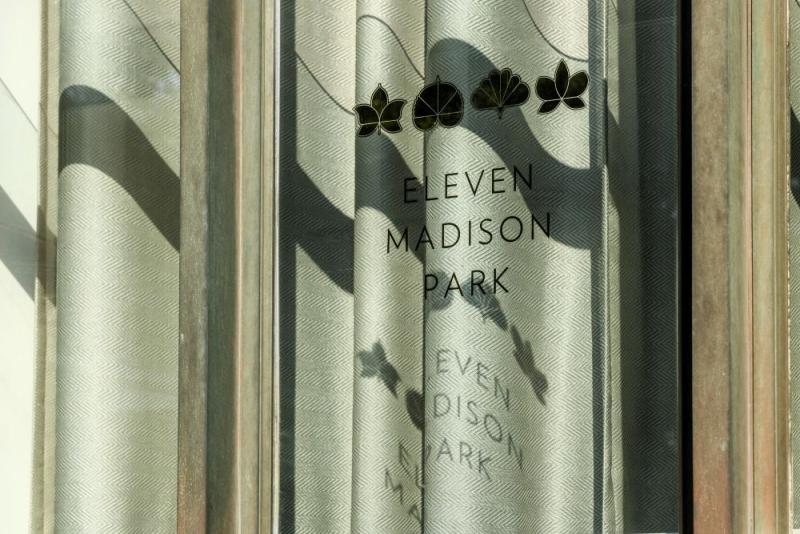Welcome to part one of our new series on the use of tea in restaurants. Over the next few installments, we'll take a look at how some of the top restaurants are using tea in their establishments. We'll explore tea pairings, tea cocktails, tea culinary dishes, and in part one, tea as a substitute for wine.
“Has this ever happened to you?” Tea Sommelier Gabrielle Jammal asks. “You go to an expensive restaurant for a meal that can only be considered fine dining, have this great meal and spend, you know, a hundred dollars a person or more if you include a bottle of wine or a bottle of champagne, and then when you ask for tea, they bring tea bags that cost them like three cents!”
It has certainly happened to Stijn Van Schoonlandt, owner of Kruze Coffee and Tea in Belgium and member of the International Tea Masters Association (ITMA). “It usually leaves me in [disbelief]. How can you have spent so much time and attention to detail during the whole course and send people out with a disappointing experience right at the end. I will not go back to such a restaurant,” he says.
In her twenty years working at restaurants, Jammal says this used to be a common occurrence, even at the finest eateries in much of the Western world.
That said, as Bob Dylan put it in his signature anthem, “The times, they are a-changin’!”
In recent years, restaurants—especially in the fine dining sphere—have been steeping themselves in the subtle complexity of tea. No longer relegated to a selection of cheap tea bags, tea has emerged as a versatile, sophisticated ingredient and pairing alternative by the world’s most lauded chefs.
Tea as Substitute to Wine
Tea sommeliers will generally discuss the flavor of tea in terms that are akin to viniculture. It follows, then, that tea is a natural alternative to wine for those who don’t wish to consume alcohol.
The 2010s really began to witness the advent of wine substitution with tea as Scandinavian restaurants broke new ground in the realm of beverages. Notably, Noma in Copenhagen—frequently listed among the best restaurants in the world—was one of the pioneers in this. Known for reshaping the boundaries of new Nordic cuisine, Noma placed itself at the vanguard of beverage service by offering fully non-alcoholic pairings that included fermented beverages and high-quality teas. These pairings weren’t merely footnotes at the end of featured lists. Rather, they became integral to the menu.
Chef René Redzepi (whom Food & Wine called “the world’s most influential chef” in 2017) and his team also hit high notes for beverage innovation in the Michelin-starred context. He is also known for cooking with tea, but it is often difficult to discern the key ingredient, such as when he makes an emulsion of butter with black tea that he uses to wilt Swiss chard. Customers just get the sense that there’s something special about his cooking.
Sebastian Tollius, beverage director at New York City’s Eleven Madison Park, the world’s only vegan Michelin three-starred restaurant, remarks on the evolution of tea into an essential part of the menu, “It’s gone from being a quiet afterthought at the end of the meal to becoming a central character in our beverage program.”

Tollius says tea is germane to their approach to beverages and their combination with food, “At Eleven Madison Park, we use tea as a key part of our non-alcoholic pairings. Different teas like oolong, rooibos, pu-erh, hibiscus, and herbal infusions are combined with ingredients like fresh juices, vinegars, and herbs to create drinks that match the complexity of wine pairings.”
[Author’s note: Rooibos, also known as “red tea” for the color of the leaves, is not actually a tea. All true teas come from the Camellia sinensis plan,t but rooibos grows from a South African shrub called Aspalathus linearis.]
In France, author, agronomist, tea expert, consultant, and owner of the eponymous brand, Lydia Gautier Natural Teas & Herbals (Thés &Tisanes Naturels), Lydia Gautier, contends that as recently as three years ago, the shift started occurring in French cuisine. “Management in restaurants began to realize that consumers as a group – meaning not just the odd person – had begun requesting alternatives to wine with food offerings,” she says.
“Of course, Paris, with its large East Asian population, has had restaurants serving Jasmine tea and Japanese green tea at Chinese and Japanese restaurants [respectively] for long,” she adds.
Gautier should know. She has spent the past thirty years studying tea and other plants, sourcing tea, and helping other businesses incorporate tea in their offerings – activity, which culminated in her founding the brand. She has also written several books on the subject, including Tea: Exotic Flavours and Aromas from Around the World, in 2006, which has become something of a reference book on tea. Her latest title, Tea-tail Party, is an exploration of the avant-garde in tea-based beverages.

With the French being as serious about wine as their cuisine, one might imagine the sort of reaction such requests may have initially provoked at haute cuisine restaurants. But Gautier says that such establishments have adjusted in their typically sophisticated manner, “People know about teas in France. Tea consumption is becoming more popular, and a vibrant tea culture has developed. So, as much as we love our wine, it was certainly not seen as something blasphemous!”
“Rather, the demand has provided an opportunity for fine French cuisine to evolve and for chefs and beverage professionals to experiment and create,” continues Gautier. “And people are enjoying like you can’t imagine!”
Indeed, France seems to be following a trend in the Western hemisphere to move away from alcoholic beverages to those that are healthier. Tea offers the benefit of being a natural and complex beverage comparable to wine with perhaps even more pronounced health benefits.
“Actually, tea and wine have many similarities,” says Gautier who has worked with vineyards in the past, adding: “They are both a monoculture plant, both produce a variety of flavor notes, and the steps in cultivation and processing are similar.”
EXAMPLES OF ANALAGOUS PAIRINGS – TEA AND WINE
Dish Type | Tea Pairing | Wine Pairing |
|---|---|---|
| Sashimi | Sencha Green Tea – grassy, slightly sweet, palate-cleansing, Darjeeling Emerald Green | Sauvignon Blanc – crisp acidity complements raw fish |
| Shrimp Cocktail | White Tea, especially sun-dried like Taiwanese Baozhong – delicate, floral notes enhance sweetness | Champagne – effervescence balances richness |
| Grilled Meats | Lapsang Souchong – smoky flavor pairs with charred meats | Syrah – bold, smoky notes match grilled flavors; Pinot Noir complements lamb |
| Spicy Indian Dishes | Darjeeling – fruity, floral notes complement spices as well as Assam for strength to add contrast to the dishes | Riesling, Chenin Blanc – sweetness tames heat as well as Pinot Noir |
| Cheese Platter | Oolong and First Flush Darjeeling, floral, nutty tones pair with cheese varieties | Chardonnay – buttery texture complements cheese; Pinot Noir complements strong cheese like Brie |
| Chocolate Desserts | Rooibos – sweet, nutty flavor enhances chocolate | Port – rich, sweet notes match chocolate |
(Sources: Food & Wine, Better Homes & Gardens, and Delish)
Plan to Attend or Participate in World Tea Expo, March 23-25, 2026
To learn about other key developments, trends, issues, hot topics and products within the global tea community, plan to attend World Tea Expo, March 23-25, 2026 in Las Vegas, co-located with Bar & Restaurant Expo. Visit WorldTeaExpo.com.
To book your sponsorship or exhibit space at World Tea Expo, or to inquire about advertising and sponsorship opportunities at World Tea News, contact:
Ellainy Karaboitis-Christopoulos, Business Development Manager, Questex
Phone: +1-212-895-8493; Email: [email protected]
Looking for professional tea education, certifications, and more? Visit World Tea Academy and register for courses today!
Also, be sure to stay connected with World Tea Expo on social media for details and insights about the event. Follow us on X, Facebook, Instagram and LinkedIn.
